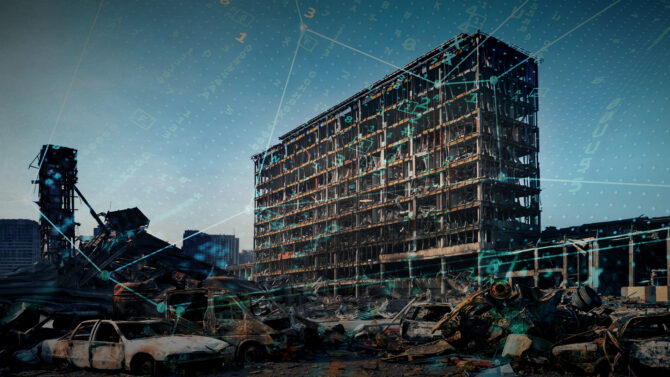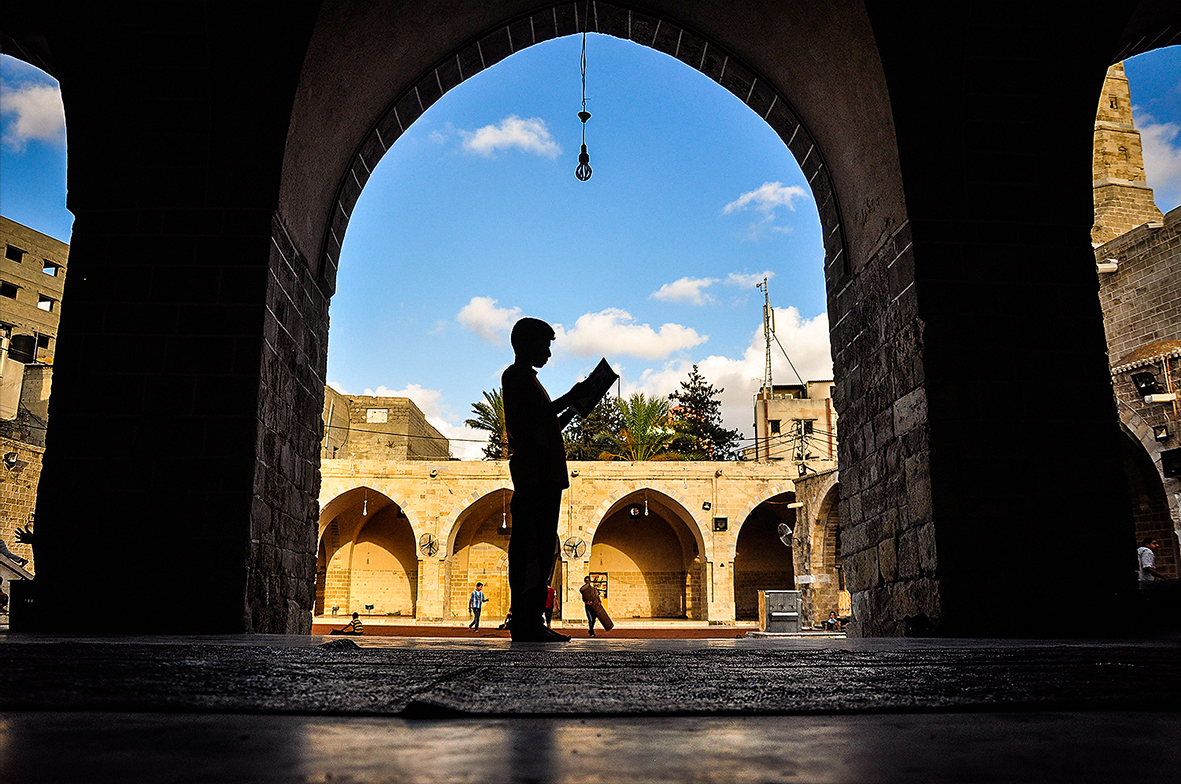This article was originally published by INKSTICK on 19/12/2023 and is hereby reproduced by iMEdD with permission. Any reprint permissions are subject to the original publisher.
Images: Alaa El Halaby
*Mohammed Ali is a journalist working in Gaza for a major international newswire. He wrote this first-person account under a pseudonym to protect his identity.
Since Oct. 7, Israel’s war in the Gaza Strip has destroyed or damaged hundreds of archeological sites in the coastal enclave.
Investigating war crimes using OSINT: A guide for journalists

Dr. Manisha Ganguly discussed at the iMEdD International Journalism Forum the techniques journalists can employ to investigate potential war crimes using information readily accessible to the public.
In the Gaza Strip, history whispers from every corner, every stone, and every archway. Steeped in centuries of civilization, the coastal enclave has long been a crossroads of cultures, each leaving its own unique mark on the land. But today, amid more than two months of Israel’s war in Gaza, these testaments to a rich and diverse past face a perilous future as Israeli bombardment has not only claimed lives but has wrought destruction in the heart of Palestinian heritage — its historical sites.
Since it began on Oct. 7, Israel’s war on the besieged Gaza Strip has killed at least 19,400 Palestinians, displaced some 80% of the population and destroyed some 52,500 buildings. Airstrikes and fighting have also destroyed or damaged hundreds of archeological sites and landmarks.
“For Palestinians, archaeological sites are more than mere historical landmarks: they are the living testimony of our rich past,” says Ahmed Al-Bursh, the director of restoration and protection at the Ministry of Tourism and Antiquities. His voice was tinged with a mixture of sorrow and defiance. “Every strike on these sites is a strike on the Palestinian narrative, an attempt to erase our history from the records of time.”
Historic landmarks like the Great Omari Mosque, a jewel of Islamic architecture, stand as a testament to the enduring spirit of Gaza. As a Christian or Muslim holy site since the fifth century, its towering minarets and intricate carvings call back to a time when faith and artistry seamlessly intertwined. In early December, the Great Omari Mosque was bombed and became one of at least 104 mosques already razed throughout more than two months of war.
“The Omari Mosque is more than a place of worship,” Al-Bursh says, reverence in his voice. “It’s a symbol of our Islamic heritage, a beacon that has stood the test of time.”
“War Crime that Cannot be Ignored”
Similarly, the Church of Saint Porphyrius, with its ancient stones, has been a place of solace and reflection for centuries. On Oct. 19, an Israeli airstrike hit and damaged part of the Greek Orthodox church, killing at least 18 people who were among the hundreds of displaced Palestinians sheltering in its compound. After the deadly strike, the Orthodox Patriarchate of Jerusalem condemned the attack and said that “targeting churches and their institutions, along with the shelters they provide to protect innocent civilians … constitutes a war crime that cannot be ignored.”
Highlighting the mosque and church’s significance as symbols of religious and cultural harmony, Al-Bursh adds, “These sites represent our pluralistic history, a time when multiple faiths coexisted in peace.”
Other examples of Gaza’s rich historical tapestry include ancient museums like the Pasha Palace and the labyrinthine streets of the Old City. Describing these sites, Al-Bursh’s passion comes through. “Walking through these streets is like traveling back in time,” he says. “Each corner of each building has a story to tell.”
Abdulaziz Al-Balbisi is the founder of Gaza Tales, an initiative that helps teach residents of the Strip about its antiquities and history. He expressed deep frustration for the loss that Gaza has endured. “Places like the Al-Omari Mosque demonstrated the antiquity of Gaza,” he says. “Targeting these sites is a blatant assault on our cultural authenticity.”
For the last year, Al-Balbisi’s initiative included engaging community members through trips and collaborations with organizations like the United Nations Educational, Scientific and Cultural Organization (UNESCO) — efforts that now seem in vain as airstrikes continue to flatten historic sites.
Targeting these sites is a blatant assault on our cultural authenticity.
Abdulaziz Al-Balbisi
Also at potential risk are the Wadi Gaza Wetlands, important due to their ecological and cultural significance. Once severely polluted, tens of millions in funds were set to restore the wetlands before the war. UNESCO has described the wetlands as “one of the most important coastal wetlands located on the Eastern Mediterranean Basin.”
These wetlands, the only of their type in the Palestinian territory, play a significant role in the cultural and social landscape of the area. They also provide an essential habitat for several bird species and other animals. In addition to providing Gaza’s citizens with a unique natural haven from the stresses of life in the overcrowded enclave and the fighting, the wetlands offer a vital supply of water. The ongoing war’s impact extends far beyond human casualties and hits at the very natural environment that sustains life and culture in the region.
“Destruction of Our Cultural Memory”
With devastation mounting by the day, more than 150 of the some 300 archaeological sites in Gaza have been targeted. “These attacks indicate a systematic policy against our historical and cultural narrative,” Al-Bursh argues.
However, the fact that fighting is ongoing makes their efforts even more difficult. “The Israeli bombardment has been merciless, leaving nothing — humans, animals, or stones,” Al-Balbisi says.
The impact of the war on Gaza’s heritage resonates with a deeper implication. The destruction of these historical sites is not just a loss for the Palestinian people but a loss for global heritage. “The bombing spared nothing,” says Al-Balbisi. “It’s as if they want to wipe out everything that tells the story of Gaza. Before the war, there were attempts to distort our history and overshadow our narrative. Now, it’s a direct destruction of our cultural memory.”
Not just a battle over land or politics, the ongoing war on Gaza is also a struggle for the preservation of a culture and a history that is being erased under the weight of airstrikes and bombings. As international concern for the humanitarian toll of the conflict grows, so too does the need to acknowledge and address what critics describe as a “cultural genocide” unfolding within Gaza’s borders. In the rubble of these ancient sites lie the shattered fragments of a narrative that has survived centuries and is now at risk of being silenced forever.
Officials, including Al-Bursh, Al-Balbisi, and volunteer teams, have embarked on a journey of preservation for these sites. “Our work now is about urgent protection,” Al-Bursh adds. “We’re doing everything in our power to save what we can, to preserve the remnants of our history. But the challenge is monumental. We need international support, both in terms of aid and awareness, to undertake the massive task of protecting these sites.”

